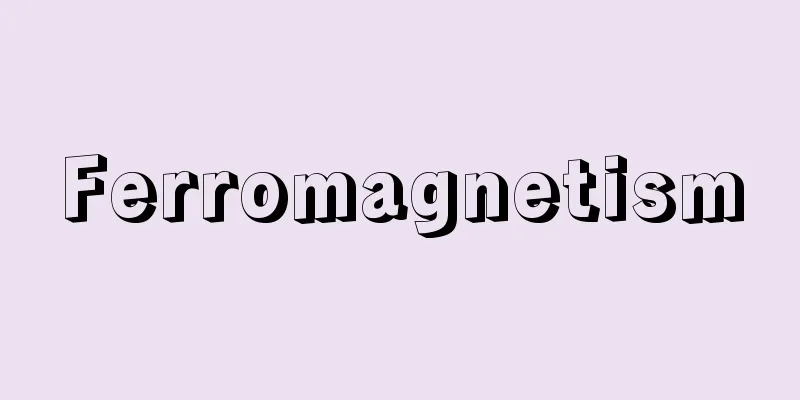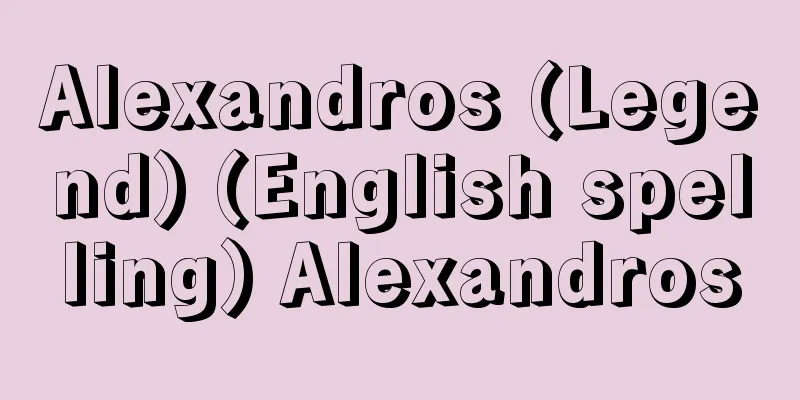Ferromagnetism

|
A magnetic material that has spontaneous magnetization is called a ferromagnetic material. Metals such as iron, cobalt, and nickel are well-known ferromagnetic materials. The magnetism exhibited by a ferromagnetic material is called ferromagnetism, and is distinguished from antiferromagnetism, paramagnetism, and diamagnetism. In a normal ferromagnetic material, the spontaneous magnetization decreases with increasing temperature, and disappears completely at a certain temperature. This temperature is called the Curie temperature. At or above the Curie temperature, a ferromagnetic material exhibits paramagnetism. A ferromagnetic material is usually divided into a large number of magnetic domains. When an external magnetic field is applied to a ferromagnetic material and then decreased, it exhibits magnetic hysteresis due to the change in magnetic domains. A ferromagnetic material has spontaneous magnetization because exchange interactions act between the magnetic atoms or ions that make up the ferromagnetic material, aligning their spins, and therefore their magnetic moments, in parallel. However, thermal motion prevents this, so as the temperature increases, the parallelism of the magnetic moments becomes disturbed, and above the Curie temperature, the spontaneous magnetization disappears. The magnetic susceptibility of a ferromagnetic material above its Curie temperature obeys the Curie-Weiss law. Ferrimagnetism and parasitic ferromagnetism are both included in the broad definition of ferromagnetism because they have spontaneous magnetization. Source: Morikita Publishing "Chemical Dictionary (2nd Edition)" Information about the Chemical Dictionary 2nd Edition |
|
自発磁化をもつ磁性体を強磁性体という.金属の鉄,コバルト,ニッケルなどはよく知られた強磁性体である.強磁性体が示す磁性を強磁性といい,反強磁性,常磁性,反磁性などと区別される.普通の強磁性体では自発磁化は温度の上昇とともに減少し,ある温度で完全に消失する.この温度をキュリー温度という.キュリー温度以上では,強磁性体は常磁性を示す.強磁性体は通常は非常に多くの磁区に分かれている.強磁性体に加えた外部磁場を強くしていき,次に減少させると,磁区の変化に原因する磁気ヒステリシスを示す.強磁性体が自発磁化をもつのは,強磁性体を構成している磁気的原子あるいはイオンの間に交換相互作用がはたらいて,それらのスピン,したがって磁気モーメントを平行にそろえるためである.一方,熱運動はそれを妨げるので,温度の上昇とともに,磁気モーメントの平行性は乱れ,キュリー温度以上では自発磁化が消えてしまう.強磁性体のキュリー温度以上の磁化率は,キュリー-ワイスの法則に従う.フェリ磁性や寄生強磁性は自発磁化をもつために,広い意味の強磁性に含まれる. 出典 森北出版「化学辞典(第2版)」化学辞典 第2版について 情報 |
>>: Kyoshi Comma - Kyoshi Comma
Recommend
Cebus apella (English spelling) Cebus apella
… [Kuroda Suehisa]. . . *Some of the terminology ...
Phragmites japonica (English spelling) Phragmitesjaponica
…[Hiroshi Aramata]. … *Some of the terminology th...
Mutsuzawa [town] - Mutsuzawa
A town in Chosei County in the southeastern part o...
Queen Charlotte Islands
An archipelago on the Pacific coast of Canada, par...
Salix gracilistyla (English)
…[Tetsuichi Yahara]. … *Some of the terminology t...
Meinecke - Friedrich Meinecke
German historian. Born in Salzwedel, a small city...
Ogino Kengyo
Born: February 1731, Aki [Died] June 22, 1801 (Kyo...
Yumigahama
Located in the northwest of Tottori Prefecture, t...
《Die Klimate der geologischen Vorzeit》 (English notation)Die KlimatedergeologischenVorzeit
…Most of his 170 works are related to meteorology...
Afternoon Dress
Daytime formal attire for women, mainly for the af...
Stalinism - Stalinism
A term that characterizes the ideas and work of t...
Mount Kirishima - Kirishima-dake
…It is also called Mount Otake, Mount Odake, or M...
Linen weaver - Amafushokko
…Until the 11th century, textile production was g...
Eikando Temple
The common name for Zenrinji Temple, the head temp...
The Dengaku Daigakushi (English: Dian-ge Da-xue-shi; Tien-ko Ta-hsüeh-shih)
An official title in China from the Song dynasty t...









